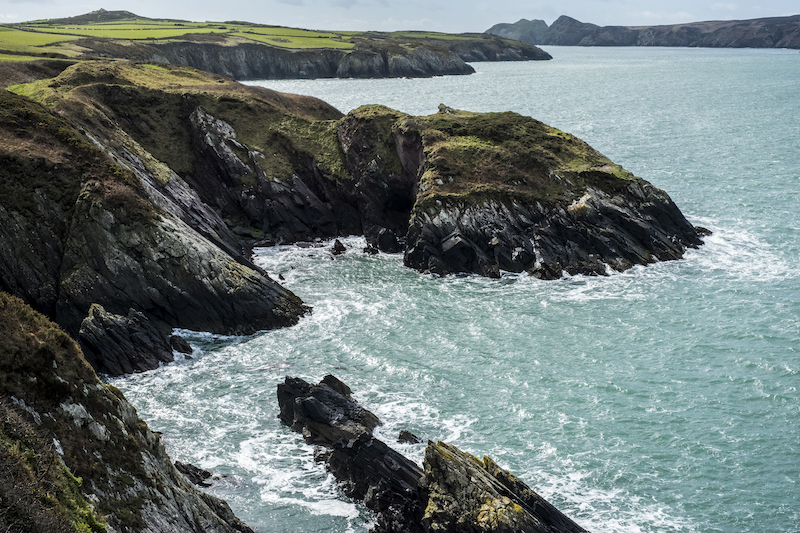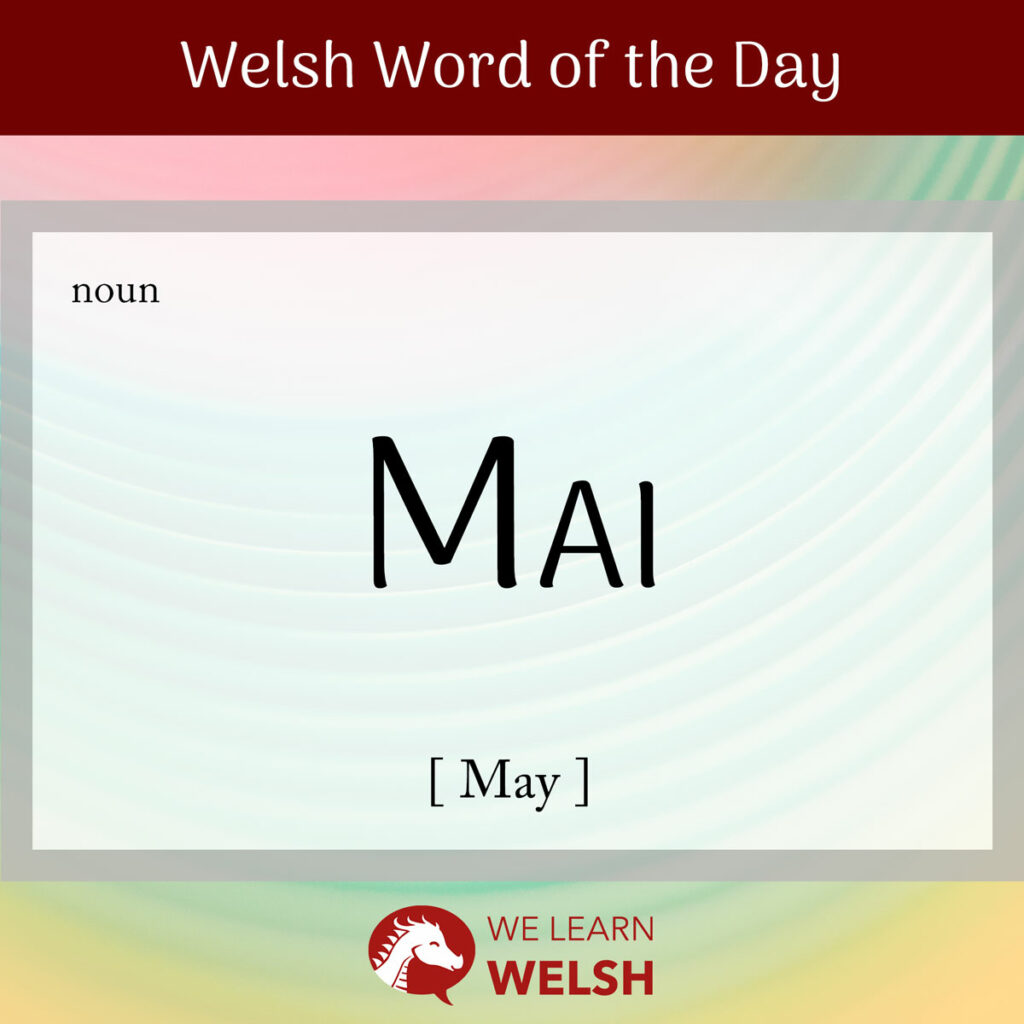One of the first words a new speaker learns in Welsh is mae, which is all-important as it basically functions as an equivalent of the English is. It’s easy to confuse with the almost completely phonetically identical Mai, which is our word of the day today.
Mai
May
There’s a reason that the Welsh Mai (or mis Mai) and the English May look and sound so similar – they both originate from the Latin Maius, which may be related to the Ancient Greek maia meaning lady.
So, Mai is a proper noun. It only responds to one mutation, which is the soft mutation, becoming Fai. This version of the word usually turns up if you’re using it with prepositions, so for example you could say o Fai (from May).
Soft mutation
Fai
Nasal mutation
N/A
Aspirate mutation
N/A
However, there’s often an intervening element that prevents this mutation from occurring. In Welsh, it’s more common to use the full form mis Mai (the month of May) rather than just Mai. As a result, you would typically say o fis Mai instead. Here, as you can see, the mutation still takes place, but it affects the word mis rather than Mai. Since both words begin with the same letter, the mutation follows the same pattern.
As you can imagine, when people are speaking casually in Welsh, they often drop the mis, as it’s not usually needed to specify the meaning. So in many phrases it’s completely up to you as to whether you use it. A good example would be ym mis Mai and ym Mai which are both used commonly, and correctly, to signify in May.
Cymru (Wales) is renowned for its beautiful natur (nature) and its often unpleasant, rainy tywydd (weather). And this isn’t just a stereotype—Cymru is genuinely one of the gwlypaf (wettest) countries in Ewrop (Europe)! This is largely due to its mynyddig (mountainous) terrain and expansive stretches of arfordir (coast), but in my opinion, the stunning scenery makes it well worth it.

The good news if you’re planning a visit is that mis Mai is generally Wales’ sunniest month, beating out even the misoedd (months) of the haf (summer) due to long dyddiau (days) and relatively low cloud coverage.
Dw i’n mwynhau treulio mis Mai yng Nghymru.
I enjoy spending May in Wales.
It’s clear that this was considered an important time of year in ancient Celtic Wales. Considered the first month of the haf, mis Mai had its own special name, cyntefin, meaning, the first month of summer, or the transition between spring and summer. Cyntefig is another possible variant.
Though this word isn’t used in colloquial speech today, you might still come across it in poetry. It’s also an adjective meaning something primal or original.
Like in other parts of the UK, the first day of Mai is an important Celtic holiday. In Wales, it’s called Calan Mai or Calan Haf. Sometimes this might have been jocularly shortened just to Clame.
Traditionally, Calan Mai would have been celebrated with singing, dancing, raising a maypole, and the gathering of blodau (flowers) and draenen wen (hawthorn) to decorate buildings and public spaces. It’s the equivalent of the Irish and Scots Beltane and the English May Day.
Be ‘nawn ni yn ystod Mai?
What shall we do during May?
Although most people these days pay more attention to global holidays like Easter and Christmas, Calan Mai and other traditional festivals are a source of pride for Welsh people, and something many would like to bring back. Here’s some Calan Mai vocabulary that you can use if you ever get the chance to attend a celebration.
- bedwen Fai = Maypole
- y gangen haf = the summer branch / the Maypole
- codi’r fedwen = raising the birch / raising the Maypole
- ffair Galan Mai = May Day fair
- dawnsio haf = May dancing
- carolau haf = May carols
- gŵyl = holiday / festival / celebration
- Brenhines Mai / Brenhines y Fai = May Queen
- twmpath = a folk-dance gathering
Let’s recap: mis Mai is the Welsh for the month of May. The full term is mis Mai, but a lot of the time you can just shorten this to Mai. It’s a month of haul (sunshine) in Cymru, with lots of beautiful bywyd gwyllt (wildlife) to be spotted and warm days on one of the country’s many traethau (beaches) to enjoy. It’s also the first month of summer in the Celtic calendar, and traditionally celebrated with community gathering, canu (singing), and dawnsio (dancing). What’s not to like?!
Important: Mai has a second meaning in Welsh – that is, it is used as part of the grammatical linking structure for emphatic sentences, which are a special alternative way of phrasing sentences in Welsh which (rather sensibly) help to emphasise a particular element of speech. If this unique feature of Welsh is something you’re interested in seeing an article about, let us know!

